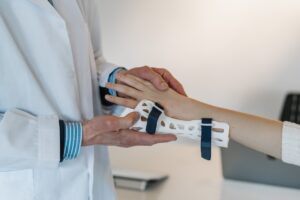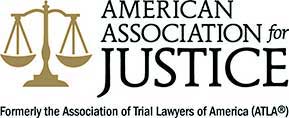The Truth About The Medical Malpractice Crisis Part III
March 2, 2015
 The Truth About the $2.9 Million Dollar McDonald’s Coffee Spill Verdict
The Truth About the $2.9 Million Dollar McDonald’s Coffee Spill Verdict
One of the most well known personal injury cases is the “McDonald’s coffee spill” case. This case gave rise to the attacks on “frivolous” lawsuits in the United States and has been characterized by many people, unfamiliar with all the facts, as a “jackpot justice” lawsuit. Many people believe that in this case a jury awarded millions of dollars in damages to a woman who had merely spilled coffee on herself but that is not what happened. This blog will shed new light on this infamous case.
n 1992, Stella Liebeck, who was seventy-nine years old at the time, purchased coffee from a McDonald’s drive-thru. She was a passenger in her son’s car. They were stopped in the parking lot of the McDonald’s when she removed the lid from the coffee cup, which she was holding between her legs, to add cream and sugar and accidentally spilled the coffee onto her lap.
What many people do not know is that McDonald’s had a longstanding policy of serving coffee at an incredibly high and illegal temperature. A temperature so high that it caused serve burns within three seconds of contact with the skin. A temperature so high that a study conducted of coffee temperatures from local restaurants found that no other restaurant even came close to the temperature at which McDonald’s coffee was served. 130 degrees is the industry standard and yet McDonald’s served its coffee at 190 degrees, within 22 degrees of boiling, because 190 degrees keeps the coffee in the pot fresher for longer so more coffee could be sold and profits could be increased.
The temperature of the McDonald’s coffee was so high that the coffee spill caused Stella Liebeck to suffer the most serious kind of burn, third-degree burns, and required skin grafts on her inner thighs, crotch, and genitals.
What many people also do not know is that this was not the first time someone had been seriously injured by the dangerously hot McDonald’s coffee temperatures. McDonald’s had been aware of the dangers of serving coffee at 190 degrees because of the 700 plus reports of previous coffee burns some of which also caused third degree burns. Moreover, McDonald’s had been aware of this problem for over a decade and had openly acknowledged at trial that they knew customers were unaware of the risk of serious burns from the coffee.
Yet, McDonald’s continued selling coffee at this dangerously high temperature because, as argued by an expert witness for McDonald’s at trial, the number of burns was insignificant in comparison to the billion plus cups of coffee it served each year, and the profits it thereby made.
Only after knowing that McDonald’s had openly and willingly known that it was selling a dangerous product and seeing the severity of Stella Liebeck’s injuries, did the jury reach a verdict against McDonald’s. She ultimately received several hundred thousand dollars but was never able to walk again because of her burns.

 The Truth About the $2.9 Million Dollar McDonald’s Coffee Spill Verdict
The Truth About the $2.9 Million Dollar McDonald’s Coffee Spill Verdict




